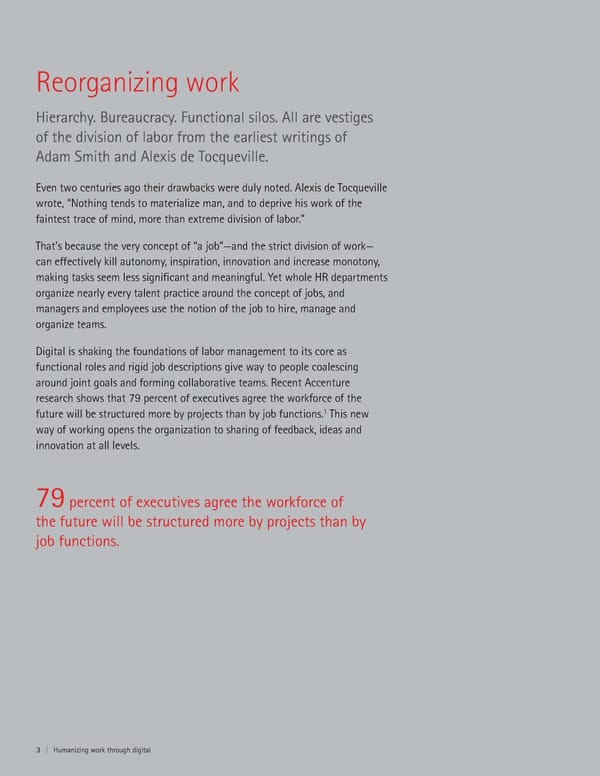Reorganizing work Hierarchy. Bureaucracy. Functional silos. All are vestiges of the division of labor from the earliest writings of Adam Smith and Alexis de Tocqueville. Even two centuries ago their drawbacks were duly noted. Alexis de Tocqueville wrote, “Nothing tends to materialize man, and to deprive his work of the faintest trace of mind, more than extreme division of labor.” That’s because the very concept of “a job”—and the strict division of work— can effectively kill autonomy, inspiration, innovation and increase monotony, making tasks seem less significant and meaningful. Yet whole HR departments organize nearly every talent practice around the concept of jobs, and managers and employees use the notion of the job to hire, manage and organize teams. Digital is shaking the foundations of labor management to its core as functional roles and rigid job descriptions give way to people coalescing around joint goals and forming collaborative teams. Recent Accenture research shows that 79 percent of executives agree the workforce of the 1 future will be structured more by projects than by job functions. This new way of working opens the organization to sharing of feedback, ideas and innovation at all levels. 79 percent of executives agree the workforce of the future will be structured more by projects than by job functions. 3 | Humanizing work through digital
 Humanizing Work Through Digital Page 2 Page 4
Humanizing Work Through Digital Page 2 Page 4